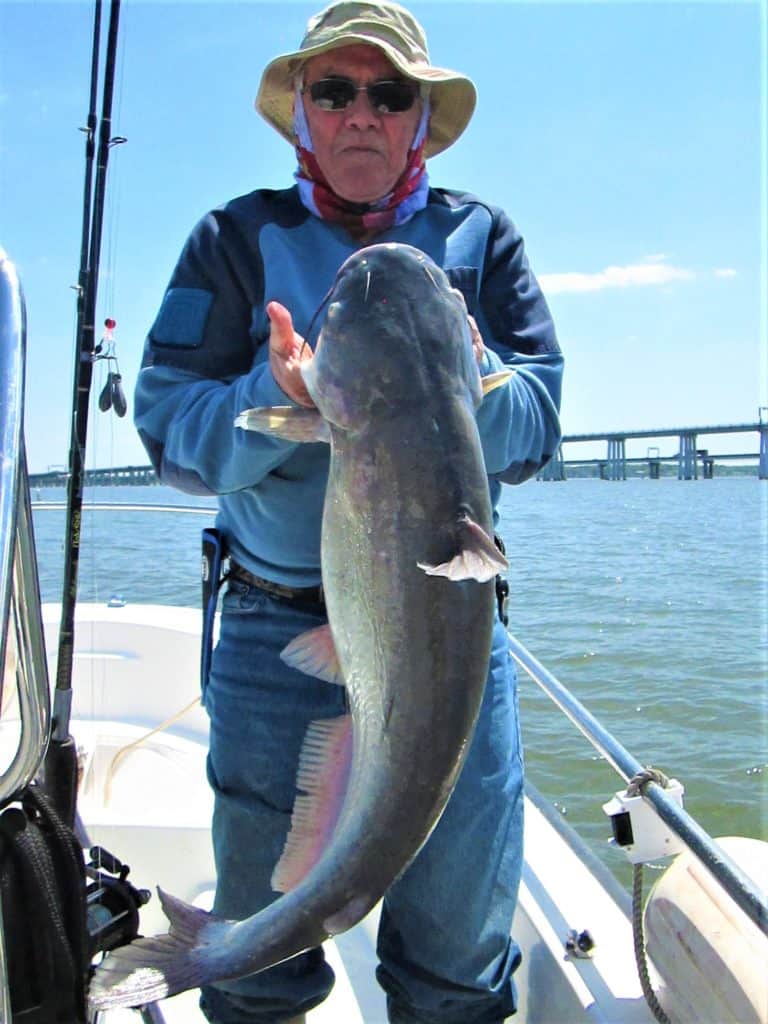Sporting Life

Trophy Fish of Another Color
The fish on my line moved off rather casually, making me think that perhaps it did not know it was hooked. Freezing the turning reel spool with my thumb, I decided to test the mystery critter’s mettle … big mistake. The creature stopped, shook its head, and then moved smartly off with the eager deliberation of a freight train preparing to take on a long and arduous grade.
The conditions that morning, we had calculated, would be near perfect for big fish. Low tide was scheduled to occur right around first light. And as it usually took about two more hours before the tidal current completely reversed its direction, we expected the incoming surge to begin as we arrived on site.
My light tackle partner in this trophy endeavor, Tom Schneider, and I had secured the best possible baits that morning from our favorite commercial angler, Leo James who had netted the menhaden mere hours before. We also had two gallons of his recently ground chum (same fish) in frozen buckets in the stern of Tom’s 18-foot center console Boston Whaler.
By the calendar, the rockfish spawn had peaked weeks ago, so the larger fish were already leaving or had already left for the ocean. We were trying to plan everything as thoroughly as possible for one last try at them and the tidal currents, south of Hackett’s Point, looked to be just right for our efforts.
Tides can be predicted with consistent accuracy, but there are additional factors that can make actual conditions quite different from predictions.
The Bay is 190 miles long and varies from five to 25 miles in width and tidal currents and their vortices have to move up and down the full length of that irregular watercourse. There are five major and many smaller rivers and streams flowing into this estuary. This time of year, we also see constant winds and often copious spring rainfall.
This is undoubtedly why on that morning last week the current was still racing out, when, according to the tide schedule, it should have been coming in. Being nothing if not flexible, we set up our chumming operations with the conditions we had and almost immediately had a lovely 27-inch rockfish on the line.
Tom handled him nicely and then released him, being under the 35-inch minimum size for the trophy season. Though it was a great start, unfortunately, the tide again inexplicably changed, screeching to dead slack with no more rockfish for over an hour.
Deciding to move locations for better conditions, we picked up our gear, and Tom motored north past the Bay Bridge. We circled widely, looking for some promising marks and a moving tide and that’s when I eventually encountered the big beast at the end of my line.
It wasn’t a rockfish. After an extensive struggle, it took the two of us to lift the giant blue catfish over the gunnel and onboard.
We soon discovered that we were over an acre-sized horde of the hulking cats, hugging the bottom and dimpling Tom’s finder screen with a solid blanket of their marks below us. In very short order we had the large main cooler, then the spare fish box stuffed with the big, tasty devils.
Astounded and almost overwhelmed by this mother lode of the giant blues we soon ended the day and, while only slightly disappointed at the absence of any big striped bass, we were enthralled by the wild variety with which the Chesapeake had surprised us.
Fishfinder
The second spring rockfish season has started with the minimum legal size falling to 19 inches but the possession limit remaining at one fish. Last year channel catfish made their presence known, coming down the Susquehanna and through the Conowingo Dam outflow. This year, blue catfish have become even more widely distributed. Introduced in the Chesapeake’s James River by Virginia years ago these potential monsters (Virginia’s freshwater record is over 140 pounds) have excellent table value but also enormous appetites. The blue cats are taking fresh menhaden baits fished on the bottom but they can also be tempted with anything from fresh chicken breast to chicken livers, big minnows, nightcrawlers, bloodworms, and supermarket shrimp. Their fillets have firm, white meat and excellent flavor. The rockfish bite is best from chumming right now but as the schools form up, jigging should soon become very effective. Trophy sized rock are mostly done spawning and have gone back to their migratory routes in the Atlantic but a few holdouts are still being boated all around the Bay. The larger fish will become ever scarcer as summer takes hold—get out there now for a chance at them.
